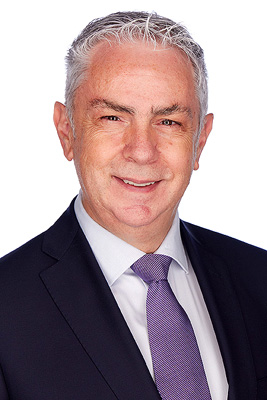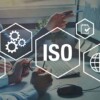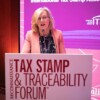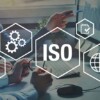
Interview with an ITSA Member – SICPA
3 Jul 2023 | Interviews, Press Releases
We continue our interview series exploring the perspective of International Tax Stamp Association (ITSA) members, who offer some of their experiences within the tax stamp industry, and their predictions of challenges and opportunities that lie ahead.
Our fifth interview – following Luminescence Sun Chemical Security, Garsu Pasaulis, Authentix and ANY Security Printing – is with Ruggero Milanese, Head of Revenue Mobilization and Conformity at SICPA. Starting at the company more than 13 years ago, his role has evolved from engineering management to product management, sales and marketing. In his current position, he works with government authorities to increase tax revenue and reduce illicit trade.

Q: Please would you introduce your company?
A: SICPA is a family-owned company with a global presence and a staff of approximately 3,000, providing secure authentication, identification and traceability solutions and services worldwide. We’re active in markets including currency, revenue mobilisation, brand protection, identity, and healthcare. Across these diverse markets, we aim to foster sovereignty and enable trust throughout organisations and societies.
Q: What do you see as the company’s particular characteristics?
A: We pride ourselves on continuously driving technological advances, and key to achieving this is drawing from a wide range of expertise. We have hundreds of specialists in disciplines including materials science, optics, electronics, software engineering, AI and more. Thanks to their varied skills, we can partner with clients to provide a very tailored approach.
Q: What role does your company play in the tax stamp industry?
A: We cover the full A to Z of tax stamp solutions, enabled by our long-standing work within the currency field. We’ve created and honed our own security features, authentication devices, track and trace equipment and related software, security printing devices and so on. Much of this leverages our currency work – the technologies we’ve developed to keep banknotes secure – and we have now brought this experience to tax stamps, along with our ability to customise technologies and build local teams to successfully implement solutions within a particular jurisdiction.
Q: What do you think is the most interesting aspect of tax stamps and/or the industry?
A: For me personally, it’s exciting that tax stamps offer an opportunity to integrate so many different technologies, both material-based and digital. It’s also remarkable to work in an industry that has a positive impact on societies, rather than simply selling products to other businesses. We create innovative solutions to issues, and ultimately, in applying them, we see positive results.
For example, we can help governments contend with counterfeiting and smuggling – which can be particularly impactful in lower income countries, where money can then be redirected towards social and infrastructure projects – and that makes me feel we’re doing some good.
Q: What changes have you seen to the tax stamp industry during your time working in it?
A: It’s an industry that started a couple of decades ago, so one might imagine it has stabilised, but in fact, I continue to see significant growth and innovation, for the better. Every year, new countries implement tax stamps for the first time, going through public procurement for the necessary solutions, putting regulations in place. I’ve seen this recently in countries such as Sierra Leone and Gambia.
Governments are also expanding the scope of products covered by tax stamps, for example from tobacco to beer, soft drinks, water, cosmetics, and many other fast-moving consumer goods, which of course requires adjustments to existing regulations. It’s very interesting to observe such progress, as it shows further axes of growth. These new and extended implementations are a clear indication that tax stamps are effective. They offer tangible benefits, and we’re pleased our customers recognise this.
Also, initiatives such as the WHO’s Framework Convention on Tobacco Control are creating increased demand for track and trace systems, which is a positive change in the market. While the WHO is primarily concerned with global health, illicit trade of cigarettes does affect this, so tax stamps have the potential to help healthcare authorities as well as revenue authorities.
Q: What changes do you envisage happening within the industry in future?
A: I see solutions becoming increasingly sophisticated, and the trend has already begun. In the past, authorities would just procure a printed batch of tax stamps, which they would then distribute to the industry, and that was it.
Today, this is not enough, and authorities are looking for sophisticated track and trace capabilities to ensure compliance. We’ve seen the potential for greatly increasing the information tax stamps can convey, such as enabling businesses and even consumers to quickly confirm the authenticity of a product. I believe this will continue, with ‘classic’ tax stamps making way for more complex and innovative products.
I also see more and more product categories being covered by tax stamps. Governments need to increase their revenue collection, especially given the impact of the COVID-19 pandemic and inflation. To achieve this without increasing tax rates, they can employ tax stamps to encompass more products, and reduce their associated illegal trade.
Refined fuel products are already a growing target, given that they are a huge source of revenue and that differences in taxation across borders encourage smuggling. I should think in the near future we would see more desire for improved traceability of these products, which could be addressed with molecular markers that act as a sort of ‘liquid tax stamp’ and that can be analysed in the field to check compliance of the fuels.
Q: What is one change to tax stamps or the industry you would like to see?
A: I would like more countries to adopt trace and trace regulations. Although I do see that is happening, still more can be done. Not every country that has committed to implementing the WHO’s tobacco controls, for example, has taken action at this time. The deadline to act is this year, so I would like to see those commitments taken seriously, with authorities worldwide putting internal regulations in place to ensure the system is properly adopted and enforced.
Q: What do you see as the main challenges within the industry today?
A: In the last few years, the adoption in the European Union of a system to track and trace tobacco products that is very similar to the one developed by the tobacco industry itself has been a concern. This is due to the delegation of key responsibilities to the industry, which weakens controls on illicit trade and could compromise the independence and security of the system, which are central tenets of the WHO FCTC Protocol on Illicit Trade. Already, an increase in illicit tobacco trade has been reported by media across Europe. I am confident that other authorities around the world will see the EU approach has not worked and will seek stronger and more independent solutions for themselves.
As an industry, I encourage each solution provider to continue to innovate in all areas, by developing ever stronger security features and effective marking technologies, but also by fully utilising the track and trace capabilities of tax stamps.
Q: Why do you think the development of standards is important for the industry?
A: By nature, tax stamps must include proprietary technologies, to protect them from counterfeiting. Nevertheless, over the past few years, interoperability has become increasingly important, especially with regard to traceability. That makes standards key to ensuring a competitive environment and allowing informed comparison of different solutions.
ISO 22382:2018, promoted by ITSA, provides guidelines for revenue authorities to implement tax stamp programmes, and offers recommendations with regard to technology, procurement and so on. It’s a very important standard that raises the bar across the industry. Now, we need to decide if, five years after its launch, we want to update the standard, and those discussions are ongoing.







